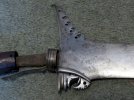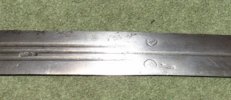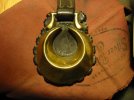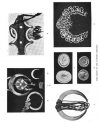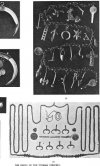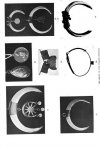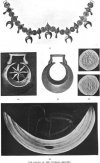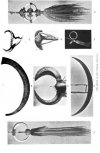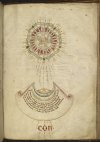- Joined
- Jan 9, 2015
- Messages
- 55
I'm going to have to remake part of the grip on this one- basically half the grip was sawdust and splinters held together by force of persuasion- but I found the blade interesting. It has the traditional file-worked "guard" section forge-welded to the blade, but the blade itself is a triple fullered blade with half-moon marks, more typically associated with North African swords with Solingen trade blades. The blade if this is a Solingen export has been slightly reworked by the smith to a more typical Moro style, and both edges are very sharp with no secondary bevel. Blade is about 20". I'll post pics when I can figure out how to do so on the site.


